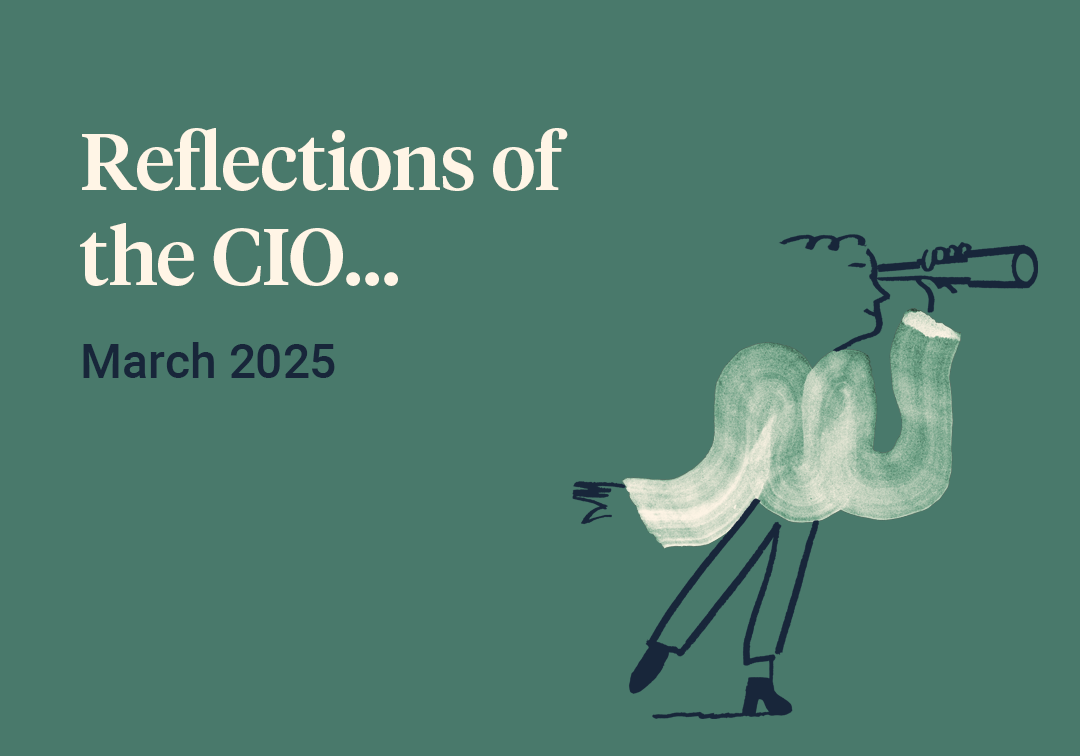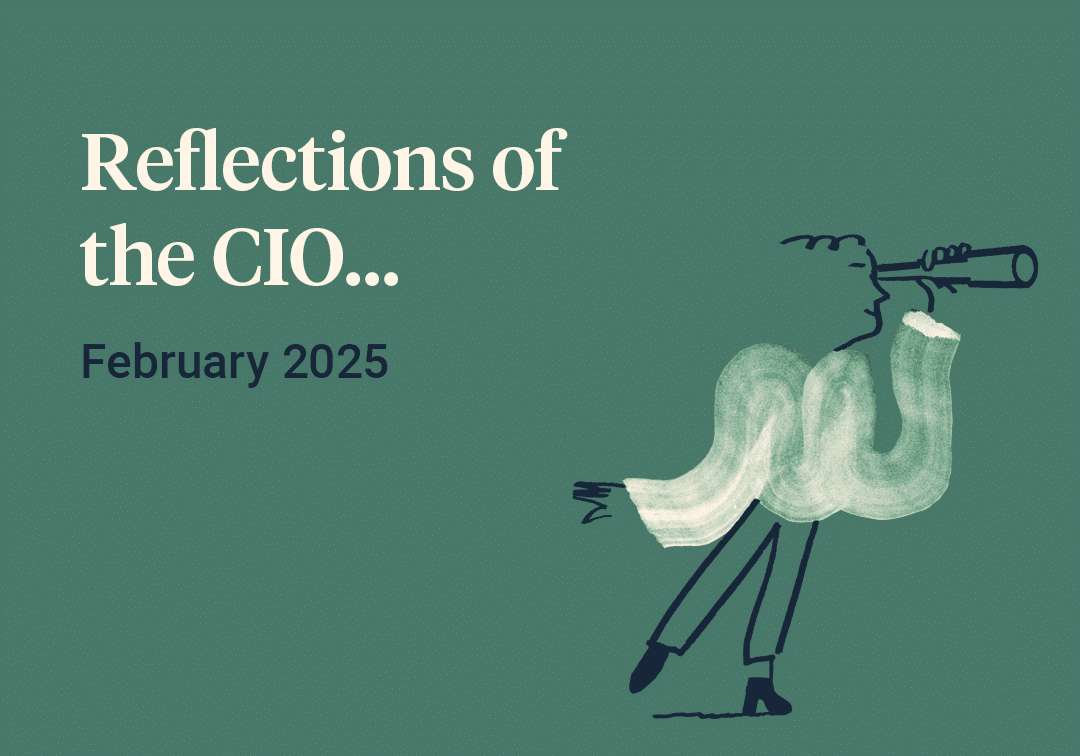It was a difficult start to the new year, with a global, simultaneous selloff in stock and bond markets leaving few asset classes or geographies unscathed. The major reasons for this market turbulence can be traced back to the end of 2021 and the actions of the central banks, who have so often been at the heart of market performance these last few years.
The biggest impact was undoubtedly made by the Federal Reserve, which toughened its messaging in relation to the pace of change of US interest rates and the speed at which it would be reversing its market interventions. With inflation data also very strong, bond markets had ample reason to sell off and as they did so, equity markets too began to wobble
“Smaller companies fell further than larger ones and faddish growth sectors (plus crypto currencies) also dropped sharply around the globe.”
Although there was widespread and sustained selling for most of January, this retreat was characterized more by violent rotations within markets than by across the board selling pressure,
Popular growth sectors which are perceived as more likely to be affected in a higher interest rate environment, led the falls within stock markets, whilst less fashionable ‘value’ focussed sectors rallied. Smaller companies fell further than larger ones and faddish growth sectors (plus crypto currencies) also dropped sharply around the globe. In contrast, commodities, especially energy related ones, performed well boosted by the ongoing geopolitical tensions in Ukraine. At the low point, global stock markets had retreated -12% from their recent highs before bargain hunting helped fuel a rally into month end and the early part of February.
As sentiment and investor positioning started to move into risk off territory over January, it was interesting to note that longer run inflation expectations have hardly budged. Although inflationary pressures are at the root of these current price movements, it seems that markets aren’t adjusting their ideas that inflation will eventually end up tamed and manageable. However, in order to reach this end point, interest rates will need to go up faster than previously thought in order to bring the current stubbornly high readings down. January has been a quick and painful readjustment to this new point of view and although we would be hesitant to say the volatility is over, it is fair to say that market expectations are now much better aligned with what is happening in the global economy.
“The January falls in markets thus seem to reflect a ‘’blow off’’ of speculative froth in financial markets that crept in as a result of the enormous support programmes provided during the Covid years.”
Do you need help managing your investments?
Our team can recommend an investment strategy to meet your financial objectives and give you peace of mind that your investments are in good hands. Get in touch to discuss how we can help you.

Events in most economies have been generally favourable over the month, with Western developed nations gradually emerging from the Omicron wave with renewed vigour. There is also a growing body of market opinion sensing that the Chinese authorities will be increasing stimulus throughout the year to help guard against property sector issues spilling over into the wider economy. With the real (or after inflation) yields of bond markets still firmly negative, the global economy does not seem to be in any great difficulty at the moment, nor in the immediate future. The January falls in markets thus seem to reflect a ‘’blow off’’ of speculative froth in financial markets that crept in as a result of the enormous support programmes provided during the Covid years.
The speed and degree of some price movements also serves as a reminder of how much market structure has also changed across asset classes since the financial crisis of 2008. The majority of daily trading is now ‘rules based’ in some manner, with automatic selling (or buying) of securities after market movements acting to amplify those movements. This can offer up as many opportunities as it does threats – smaller company valuations for example are at multi decade lows after sharp falls, and although we don’t think that volatility is over (the Ukrainian situation being a key near term reason why that is the case) we do think that the outlook is still, on balance, unchanged from our ‘glass half full’ expectations at the end of 2021.
Portfolio Performance
Portfolios overall returned between -2% to -6% on average, with the higher risk mandates falling the most. Unsurprisingly it was equities which bore the brunt of losses with smaller company and growth exposures suffering the most. More value exposed positions held up much better and these performances were reflected across geographies. Commodity positions and alternative strategies performed well, the former due to the strength of energy markets and the latter due to the nature of various option based strategies, which tend to perform well in volatile environments. Although bond markets were weak, positions here were generally resilient, reflecting the fact that most managers are either shorter duration in their exposures or hedged to some extent on interest rate sensitivity, or both.
On behalf of the Saltus Investment Committee, January 2022
Do you need help managing your investments?
Our team can recommend an investment strategy to meet your financial objectives and give you peace of mind that your investments are in good hands. Get in touch to discuss how we can help you.

Article sources
Editorial policy
All authors have considerable industry expertise and specific knowledge on any given topic. All pieces are reviewed by an additional qualified financial specialist to ensure objectivity and accuracy to the best of our ability. All reviewer’s qualifications are from leading industry bodies. Where possible we use primary sources to support our work. These can include white papers, government sources and data, original reports and interviews or articles from other industry experts. We also reference research from other reputable financial planning and investment management firms where appropriate.
The views expressed in this article are those of the Saltus Asset Management team. These typically relate to the core Saltus portfolios. We aim to implement our views across all Saltus strategies, but we must work within each portfolio’s specific objectives and restrictions. This means our views can be implemented more comprehensively in some mandates than others. If your funds are not within a Saltus portfolio and you would like more information, please get in touch with your adviser. Saltus Asset Management is a trading name of Saltus Partners LLP which is authorised and regulated by the Financial Conduct Authority. Information is correct to the best of our understanding as at the date of publication. Nothing within this content is intended as, or can be relied upon, as financial advice. Capital is at risk. You may get back less than you invested. Tax rules may change and the value of tax reliefs depends on your individual circumstances.
Related blog posts
About Saltus?
Find out more about our award-winning wealth management services…
Winner
Best Wealth Manager
Winner
Investment Performance: Cautious Portfolios
Winner
Top 100 Fund Selectors 2024
Winner
Best Places to Work 2024
£8bn+
assets under advice
20
years working with clients
350+
employees
97%
client retention rate




